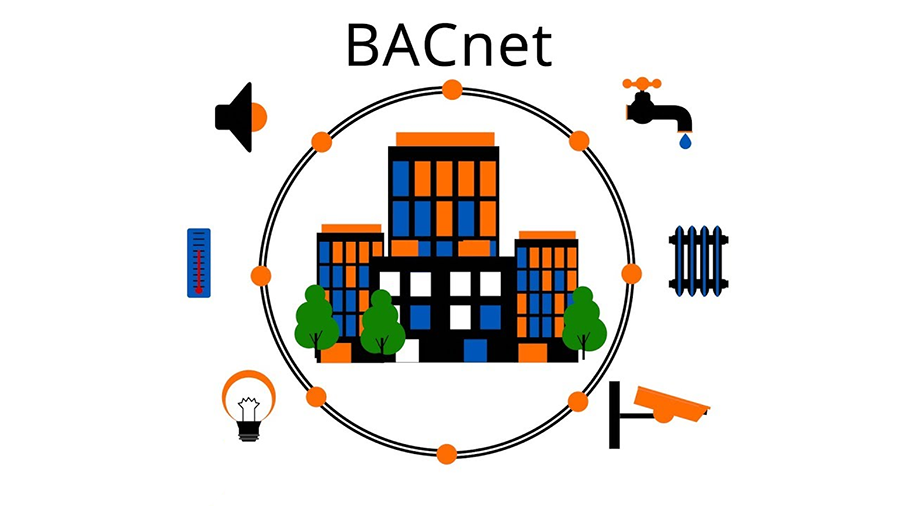Before delving into the BACnet building protocol, let's first clarify its importance as a key component of the Industrial Internet of Things IIoT. BACnet, the full name of "A Data Communication Protocol for Building Automation and Control Networks", is a standard communication protocol designed specifically for building automation and control systems. This protocol was developed by the Standard Project Committee 135PSPC 135P under the American Society of Heating, Refrigerating and Air-Conditioning Engineers (ASHRAE) over a period of eight and a half years. It aims to solve the problem of standardizing communication between different devices in building automation systems.
With the rapid development of information technology, Building Automation System (BAS) is gradually moving towards integration, intelligence and networking. However, for a long time, there have been numerous devices from different manufacturers on the market, each using proprietary protocols for communication, which greatly limits the interoperability and openness of the system. This not only increases the complexity of the system, but also makes the operation, maintenance, and upgrade of the system extremely difficult. Therefore, users urgently need a unified and open standard communication protocol to achieve seamless integration and interoperability between devices from different manufacturers.
It is in this context that the BACnet protocol came into being. It provides a standardized communication method, enabling heating, ventilation, air conditioning (HVAC), lighting, security, fire protection, and other systems from different manufacturers to integrate and interoperate on a unified platform. This not only simplifies system design and reduces costs, but also improves system reliability and flexibility.

The BACnet protocol specifies in detail all rules for the functions of the building automation network system, how the system components share data, the communication media that can be used, the functions that can be achieved, and the information formats and protocol conversions. Its core goal is to provide a method for interoperability of building automation control systems, ensuring that devices from different manufacturers can communicate according to the same set of standards.
The BACnet protocol architecture is divided into multiple layers, including the physical layer, data link layer, network layer, session layer, presentation layer, and application layer. These layers together constitute the communication framework of the BACnet protocol, ensuring reliable transmission of data between different devices.
The BACnet protocol defines a series of services and objects for data exchange and control between devices. Services include reading and writing attributes, event notifications, alarm management, etc., while objects represent various devices and functions in the building automation system, such as temperature controllers, lighting equipment, safety sensors, and so on.
The BACnet protocol supports multiple communication media, including Ethernet, MS/TP master-slave/token passing, IP, wireless, and others. This allows the BACnet protocol to adapt flexibly to different network environments and meet the needs of various application scenarios.
The BACnet protocol has been widely used in the field of building automation, and it has become a building automation network data communication standard recognized by the International Organization for Standardization ISO and the International Electrotechnical Commission IEC. By using the BACnet protocol, users can easily integrate and interoperate devices from different manufacturers, reduce system complexity, and improve system performance and reliability.
As a standard communication protocol in the field of building automation, BACnet building protocol has significant advantages such as standardization, openness, simplification of system design and maintenance, and improved system reliability and flexibility. In the future era of Industrial Internet of Things, the BACnet protocol will continue to play an important role in promoting the intelligent and networked development of building automation systems. For those who need to use networking applications, understanding and mastering the BACnet protocol will be a key step in successfully integrating building automation systems.
Edge computing gateway with BACnet building protocol devices has shown significant advantages in protocol conversion, data collection and processing, security and reliability, intelligent decision-making and optimization, and flexibility and scalability, providing strong technical support and guarantee for the construction of smart cities and building management.
As a standard communication protocol in the field of building automation, BACnet building protocol has significant advantages such as standardization, openness, simplified system design and maintenance, and improved system reliability and flexibility. In the future era of industrial IoT, the BACnet protocol will continue to play an important role in promoting the intelligent and networked development of building automation systems. For people who need to do networking applications, understanding and mastering the BACnet protocol will be a key step in successfully implementing building automation system integration.